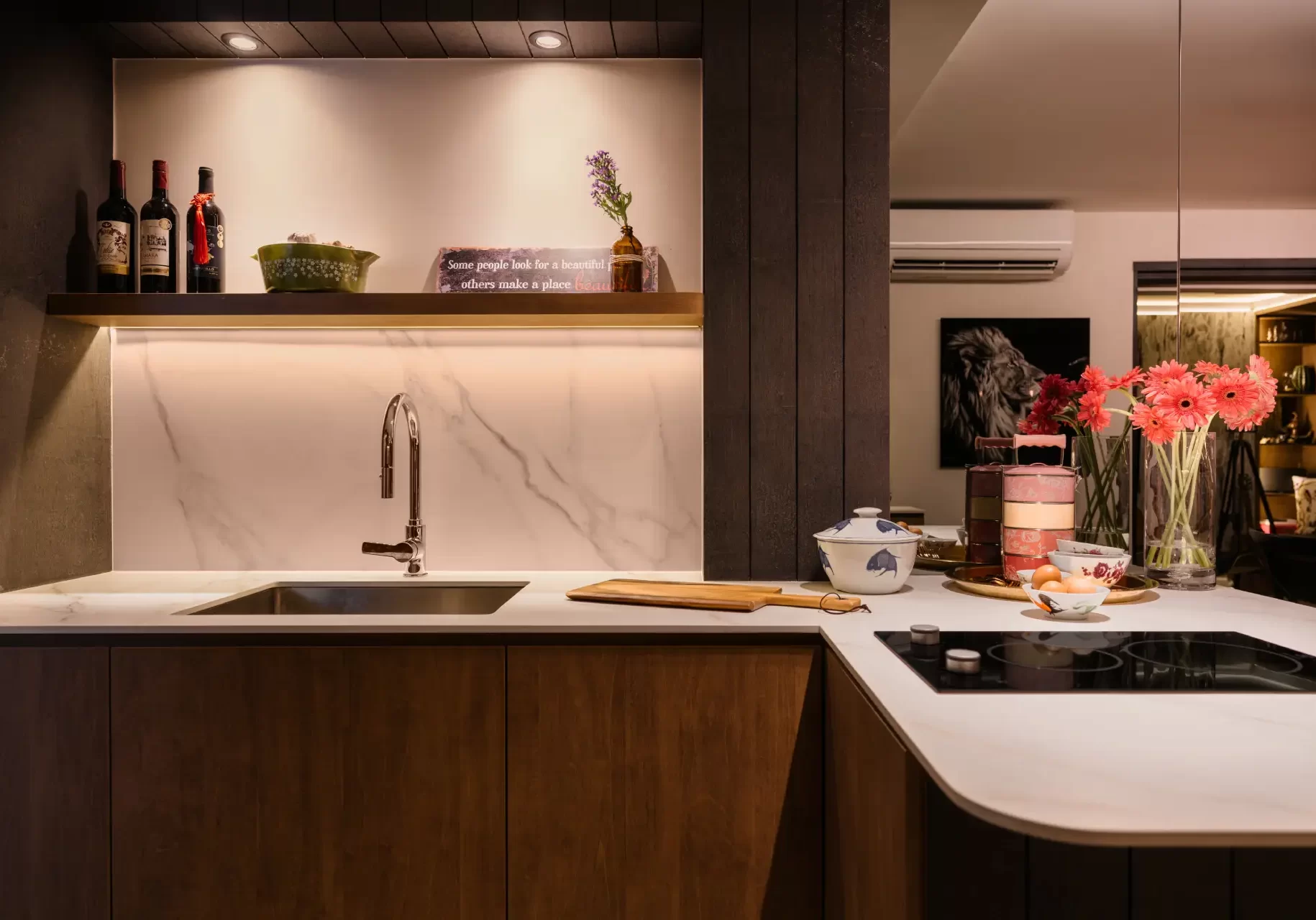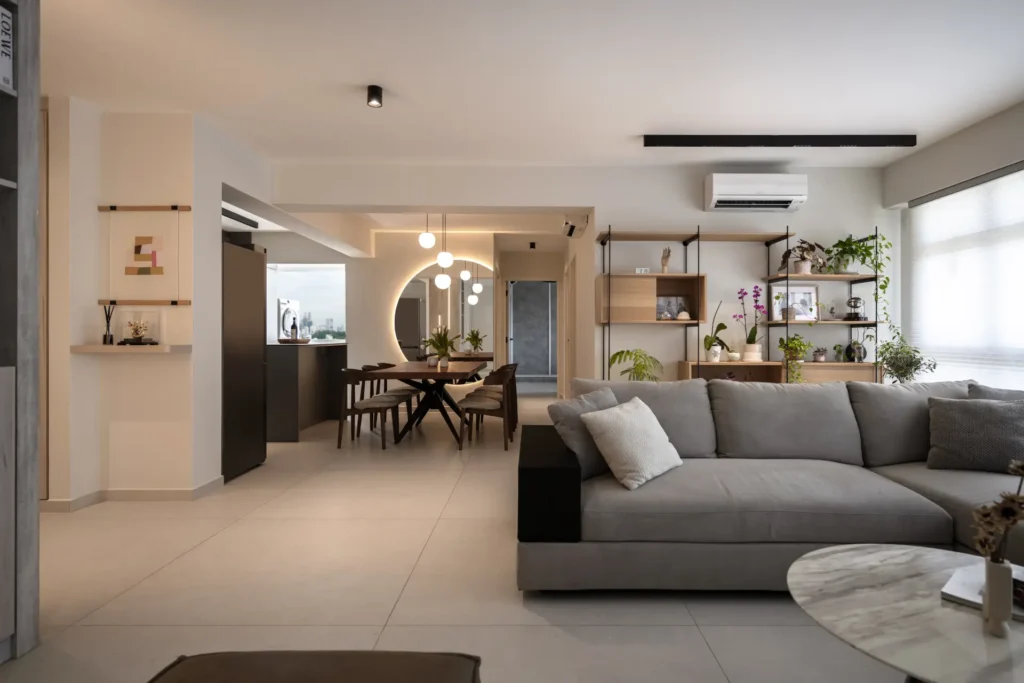5 Choices That Can Lead to Home Clutter

Do you ever feel like your home is on the verge of being swallowed by clutter? You’re not alone! From time to time, we all struggle with keeping our living spaces organised and free from unnecessary stuff. But where exactly does all of this clutter come from?
To help you find the cause of it all, let’s look at five surprising choices that can be major clutter culprits. From the allure of recreational shopping to the guilt of unwanted gifts, we’ll explore the most common hidden reasons why clutter accumulates and what you can do to combat it.
Clutter Creator Number One: Shopping for Fun
While it can be fun to explore and get in a bit of cardio, recreational shopping can easily turn your living space into a cluttered mess. As display after display stuck you in and you’re surrounded by temptation, it’s easy to buy too many things that you don’t truly need. Retail shops have a team of experts who know exactly how to reel you in with eye-catching displays and “must-have” gadgets. It’s easy to get swept up in the frenzy and come home with bags full of things that you don’t really need or want.
For too many of us, shopping has become a way to chase away stress or fight off boredom. Unfortunately, that temporary mood boost comes with a catch: clutter! We often see things portrayed as magic bullets for every problem and are promised countless shortcuts to happiness. We get sucked into the idea that buying more stuff will improve our lives but it all just ends up taking over our homes.
The initial thrill of a recreational shopping spree can quickly fade into a cycle of regret. At the moment, that trendy top or unique gadget might feel exciting. After the initial buzz wears off though, you might be left with a pang of guilt about the money spent or frustration with the clutter the item creates. This phenomenon, aptly named buyer’s remorse, can leave you feeling worse off than before your shopping trip.
How to avoid clutter from recreational shopping:
- Set a budget and stick to it.
- Make a list before you go shopping and only buy what’s on the list.
- Ask yourself if you absolutely need something before you buy it.
- Consider the long-term impact of a purchase: Will it add value to your life or just create clutter?
And, of course, the best thing that you can do is find an alternative to recreational shopping. While the allure of browsing shops and finding that perfect treasure can be powerful, there are countless alternatives that won’t clutter your life. With a bit of creativity and open-mindedness, you can get the benefits of stress relief, social connection, and a sense of accomplishment, but without the financial strain and physical clutter.
Finding a new hobby will leave you feeling more fulfilled than a shopping spree ever could. Embrace nature, learn a new skill, connect with your community, or tap into your creativity to find a way to unwind without needing retail therapy.
Clutter Creator Number Two: The “Just in Case” Trap
While the urge to buy new things can be strong, there’s a hidden culprit lurking in our homes: the “just in case” hoarder. This trap, where we save things for future use that rarely comes, can create mountains of clutter just as easily as impulse buys.
It might seem like a smart idea to save things just in case you need them later but it can (and often does!) backfire. For better or worse, it is not all that easy to predict the future. Thinking about all the things that you have saved over the years, how often do you actually use those earmarked items? If you are like most of us, these things are just sitting in storage, taking up valuable space, and gathering dust. To be honest, will you really need that old paintbrush or that chipped mug collection?
We tend to overestimate our future needs. Just because you could use a random item someday doesn’t mean you will. It’s easy to fall into this trap of inflating the likelihood of needing something down the line… but every saved item comes at a cost. It takes up space, adds to the mental burden of remembering what you have, and could even prevent you from buying something you truly need later when the storage space is full.

Clutter Creator Number Three: You Don’t Know How to Tidy Up
Ever been in a room overflowing with stuff and feeling so overwhelmed that cleaning it up feels completely impossible? If you find yourself constantly needing to do a “major clean,” then there is a good chance that you don’t really know how to tidy up your space.
If you were never taught how to tidy up as a child, you might not even be aware of where things are going wrong. The magical art of tidying up is all about putting things away as you go. It’s focusing on cleaning up after yourself at every turn rather than letting it pile up into a bigger mess. Think cleaning dishes and wiping surfaces as you cook rather than letting it all build up into a huge pile to tackle after dinner.
All too often we push off the inevitable tidying and allow clutter to accumulate. Many of us fall into the trap of “someday I’ll get around to cleaning this up,” but without a concrete plan and action, that “someday” rarely arrives, and the clutter persists. Even those who try to tidy up might struggle with inefficient methods, which makes the task feel overwhelming.
Luckily, breaking free from the tidying trap and transforming your space is possible. Here’s how:
- Start small, start now. Don’t attempt to tackle the entire mess at once. Begin with a manageable area, like a drawer or shelf. This initial success will give you a sense of accomplishment and motivate you to keep going.
- Set realistic goals. Instead of aiming for overnight perfection, set achievable goals. Focus on decluttering a room or tackling a specific type of clutter each week.
- Embrace the power of systems. Develop a tidying system that works for you. This might involve sorting by category, using designated storage solutions, or setting aside specific times for decluttering.
By developing effective tidying skills, you can overcome the feeling of overwhelm and create a more organised and peaceful living environment. Remember, progress is key! Even small, consistent efforts can make a big difference in the fight against clutter.
Clutter Creator Number Four: The Burden of Thoughtful Gestures
Gifts are a cornerstone of many relationships. While they are a meaningful way to show we care, sometimes, these thoughtful gestures can morph into a clutter creator. Enter gift guilt! This guilt stems from feeling obligated to keep all of those unwanted items from well-meaning family and friends.
Imagine this: Your aunt spends countless hours knitting your sweater. It’s a lovely gesture… but the colour clashes horribly with everything that you have. Now, you’re stuck with a bulky reminder of her love that is taking up space in your closet and nagging at your conscience every time you open the door.
Of course, the issue isn’t the gift itself but the pressure to keep it. This can be especially true with family heirlooms or sentimental pieces passed down through generations. While these items are precious, the need to keep everything can become overwhelming.
And the problem extends beyond adults. Think of your child’s room overflowing with their artistic creations: finger paintings, macaroni art masterpieces, and countless drawings. These are precious tokens of their development, but holding onto everything creates chaos.
So, how do we navigate gift guilt and avoid clutter?
First, express your sincere gratitude. A heartfelt thank you goes a long way and shows your appreciation for the thoughtfulness behind the gift. After that, communication becomes key. For close family members, consider an honest conversation about your gift preferences. One good route is to say that you would rather focus on experiences or consumable items that won’t contribute to clutter.
When it comes to dealing with the things that you already have, re-gifting can be a solution but you’ve got to do it with care. It is essential to make sure that the gift is really appropriate for the new recipient. Don’t just unburden yourself and create clutter for someone else. Look for someone who can truly make use of the item. If it really is useless, consider taking a photo and simply getting rid of it.
Finally, when it comes to your kids’ artwork, be selective. Choose a few cherished pieces to display, photograph the rest, and create a memory book together. This lets you celebrate their creativity while keeping clutter at bay.
By acknowledging gift guilt and implementing smart strategies, you can transform gift-giving from a source of clutter into a way to strengthen relationships and create lasting memories.

Clutter Creator Number Five: Nothing Has Its Place
We’ve all felt the frustration of ransacking drawers and cabinets searching for something that seems to have vanished into thin air. This often stems from a phenomenon we can call the “unhomed haven.” This happens when we’ve got a lack of designated homes for our stuff.
When you don’t have designated storage solutions, items easily get misplaced and you’re constantly digging. Things are shoved into corners or crammed into overflowing drawers. They’re easily forgotten and potentially useful things turn into clutter simply because they’re hidden from view and inaccessible.
Worse yet, this clutter grows when we can’t find something. That’s because the easy solution is often to run out and buy a replacement. This creates duplicate items, further adding to the clutter that’s already making our lives more difficult.
Fortunately, there’s a path out of the unhomed haven. By taking control of our storage, you can create a more organised and peaceful living space. Here are some tips:
- Embrace organisation systems: Invest in containers, shelves, and organisers that fit your space and needs. Labelling shelves and drawers helps you keep track of what’s where.
- Declutter before you organise: Before creating designated storage, declutter ruthlessly. Get rid of unused or unwanted items to ensure you’re only organising what you truly need.
- Categories with care: Group similar items together. This makes finding things easier and keeps related items readily accessible when needed.
- Utilise vertical space: Take advantage of walls and unused corners with shelves or hanging organisers. This maximises storage space without sacrificing valuable floor area.
Conquer the Chaos: Rules for a Clutter-Free Home
Dreaming of a calm, organised home but feel overwhelmed by the sheer amount of stuff you’re dealing with? Fear not! Creating a clutter-free home is within reach. Here are some essential rules to guide you on your journey to a more peaceful and manageable space:
Rule #1: Embrace the Power of “One In, One Out”
This mantra is the cornerstone of clutter control. For every new item you bring into your home, ask yourself: does something else need to leave? This simple rule encourages mindful purchases and prevents unnecessary build-up.
Rule #2: Everything Deserves a Designated Home
When nothing has a home, your space is a breeding ground for clutter. Avoid this trap by assigning designated storage solutions for absolutely everything. Invest in containers, shelves, and organisers that fit your space and needs.
Rule #3: Declutter Before You Organise
The urge to organise chaos can be strong, but it’s a waste of energy. Before meticulously arranging all your stuff, get rid of everything that you don’t need or want. This saves you time by leaving you to only organise the things that truly add value to your life.
Rule #4: Stop Obsessing Over the Future
We all fall victim to the “just in case” whisper and start saving random items for future use that rarely come. Be honest with yourself. Will this really be crucial to me in the future? If not, let it go. This is doubly true when you’re living in a city like Singapore where space is always at a premium!
Rule #5: Make Tidying a Habit, Not a Feat
Don’t wait for molehills to turn into mountains. Develop a regular tidying routine, even if it’s just 15 minutes a day. This small, consistent effort can make a world of difference.
Rule #6: Don’t Let Sentimentality Hinder You
We all have things in our life that are priceless but it’s important to remember that most things are replaceable (or sometimes not needed at all). If you have a sentimental item that you never touch, ask yourself if someone else might appreciate it more. Letting go of some things can be a healthy way to move forward.
Rule #7: Rethink Gifting
Gifts are a thoughtful gesture but they can also be a source of clutter. If you feel like there is nothing else that you really need at home, talk to your family and friends about making a policy to give each other different types of gifts. That could be tickets to an event, a special dinner out, a favourite bottle of wine, fancy chocolates, or other things that no one will feel obliged to store for decades.
Rule #8: Embrace the Power of No
It’s easy to feel pressured to take unwanted things, whether that is free hotel shampoos or hand-me-downs. But you don’t need to! Just politely decline things offered and get in the habit of not grabbing things that you will never use.
Rule #9: Find Joy in Letting Go
Getting rid of things shouldn’t be torture! Focus on your goal of having a clean and tidy space rather than the discomfort of getting rid of things. If these are things that you never use, you are only benefiting from getting rid of them.
Rule #10: Celebrate Your Progress
Decluttering is a journey, not a destination. Celebrate your progress, no matter how small it is. Reward yourself for reaching milestones (not with stuff!), and enjoy the feeling of having an organised and peaceful home.
By following these rules, you can transform your home from a cluttered space into a haven of peace and organisation. Remember, consistency is key! With a little effort each day, you can create a clutter-free environment that sparks joy and makes your life easier.
Final Thoughts
Conquering clutter isn’t about missing out or having less! Remember that your goal is to cultivate a space that reflects your needs and brings you joy. By pinpointing your personal clutter creators and taking on some simple strategies, you can transform your home from a chaotic storage unit into a peaceful haven.
Remember, progress is key. Celebrate your decluttering victories, no matter how small. With a little effort and consistency, you can reclaim your living space and create a clutter-free environment that sparks joy and makes your life easier. So take a deep breath, identify your clutter culprits, and embark on your journey to a more organised and peaceful home.
Want more tips on creating and maintaining your perfect home? Explore our inspiration board of Singapore homes.